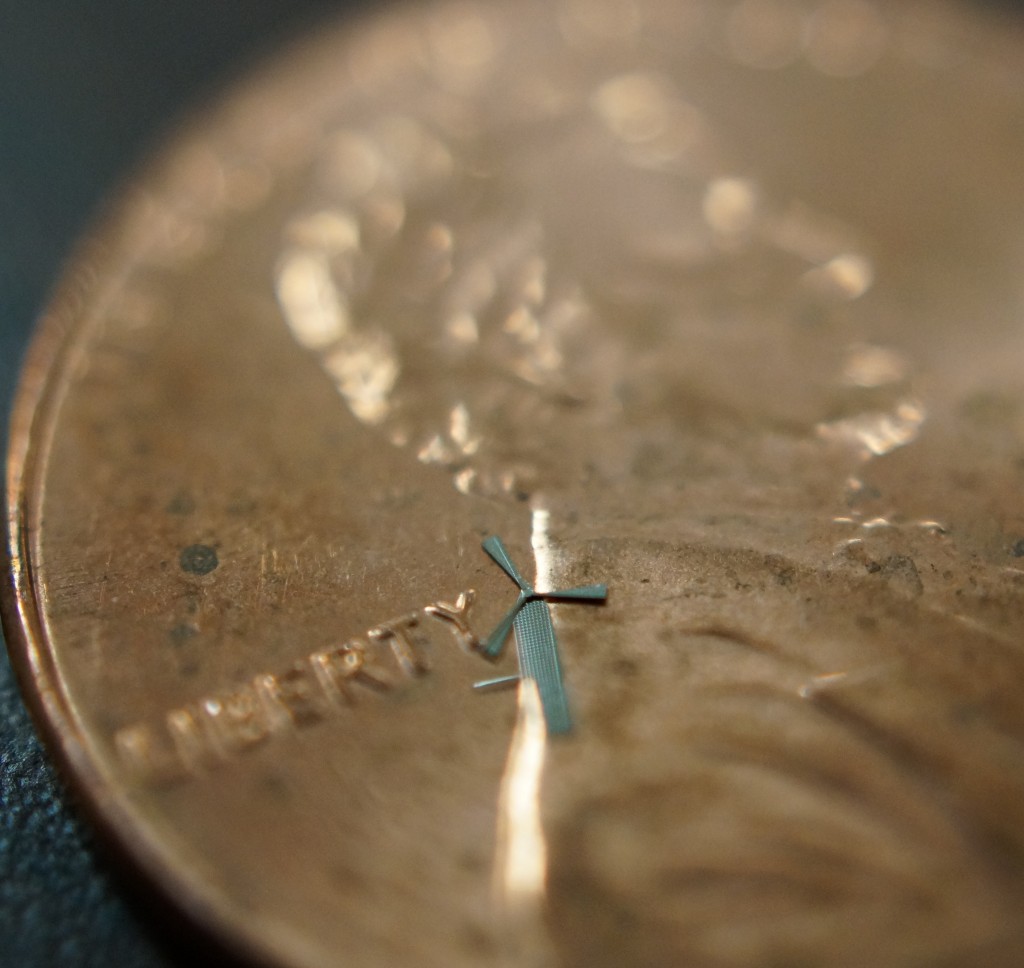
(JC Chiao/UT Arlington)
Last week, the University of Texas at Arlington filed a patent application for a minuscule windmill designed by research associate Smitha Rao and J.C. Chiao, a professor of electrical engineering.
The windmill is less than 2 millimeters across — small enough that about a thousand could fit on the surface of a cell phone, creating a sheath that could charge the battery, the researchers hope. They are also optimistic that the windmills could be manufactured cheaply using techniques from the semiconductor industry.
The pair’s work presents a new way of thinking about generating electricity from wind. Producing power efficiently on a utility scale requires building windmills that are as large as possible.
Yet Chiao and Rao were not interested with putting power on the grid, or even with wind turbines primarily. Their specialty is designing implants and sensors for medical use. The windmill was an amusing experiment that neither of them expected to succeed.
“We like to work for fun,” Chiao said.
The inspiration came from Rao’s 3-year-old daughter, who ran past her with a pinwheel in hand while she was discussing some designs for surgical devices with Chiao. The researchers expected the blades to be too fragile to withstand any strong wind.
Yet when they received the prototype from a Taiwanese foundry, WinMEMS Technologies, they found that the blades — made from a flexible nickel alloy — could withstand the blast from a leaf blower.
(MEMS is an abbreviation for a microelectromechanical system. Matt McFarland wrote earlier today about a couple of other remarkable MEMSes.)
A conventional wind turbine uses very large blades to maximize the torque applied to the generator, in the same way that a bicyclist can increase her speed by shifting to a larger gear. Makani Power, acquired by Google last year, designed a kite that turns through the air in an even wider circle to take advantage of this physical law.
The researchers at the University of Texas at Arlington might not have created a windmill that will solve any global energy crises, but their design could have other advantages, such as cost and convenience.
“If you only have one big mill, and it breaks, then everything stops,” Chiao said. He also said that the tiny windmills could be used where a conventional one isn’t necessary or feasible — to power a lantern in your backyard, for example, or for a sensor in a remote location. (Solar panels are often used for such applications now, but a network of micro-windmills could keep them powered after dark and in cloudy weather.)
The researchers hope to present their results at a conference later this year.
